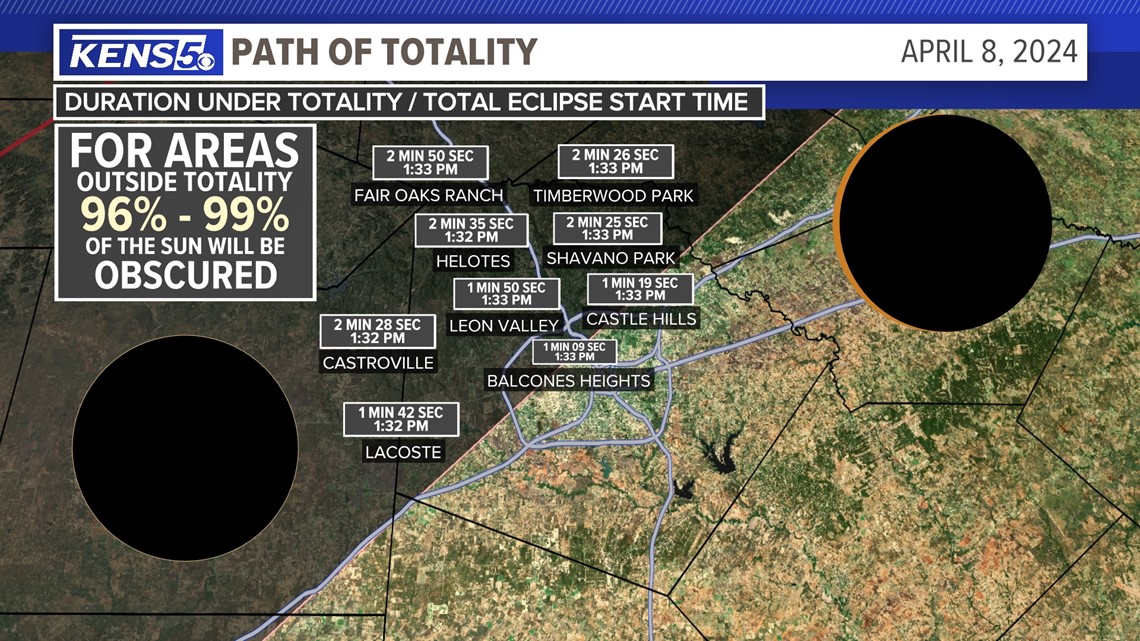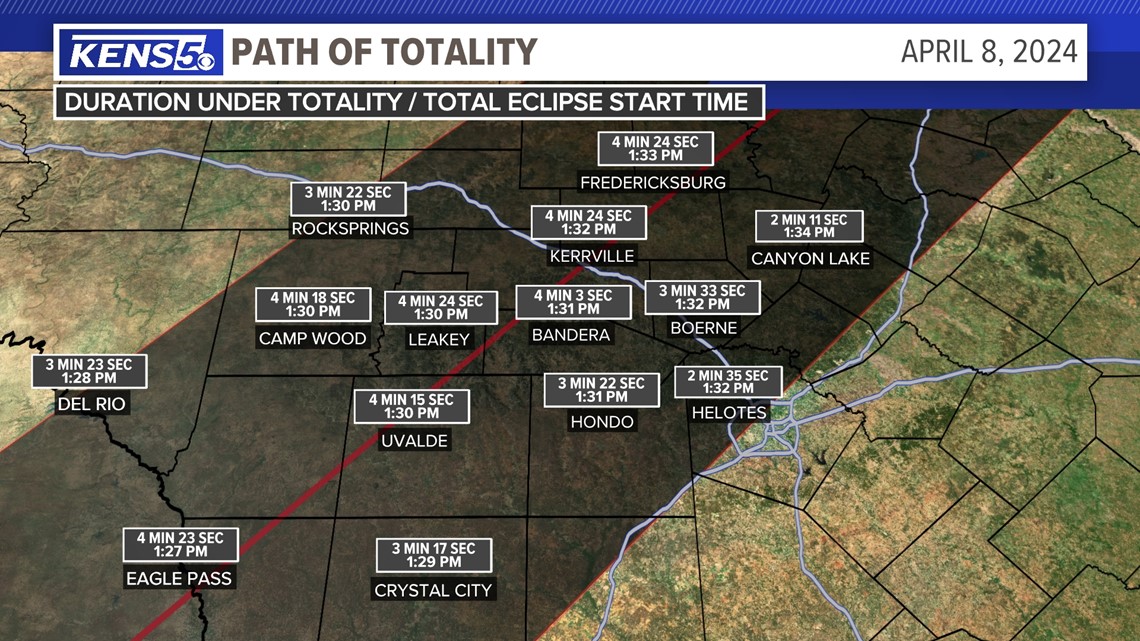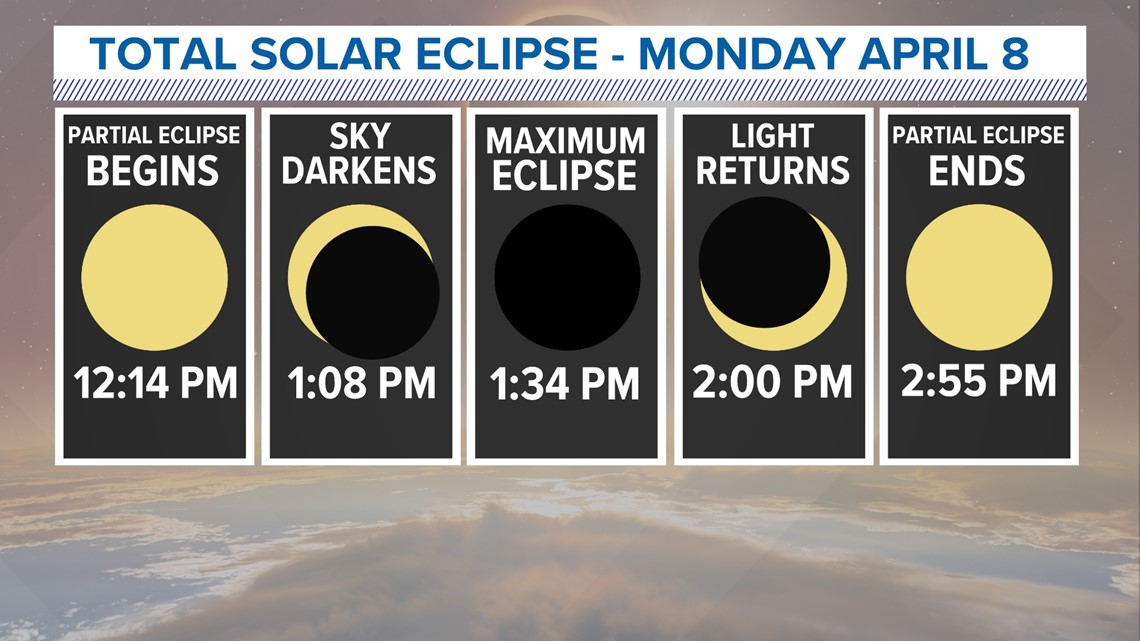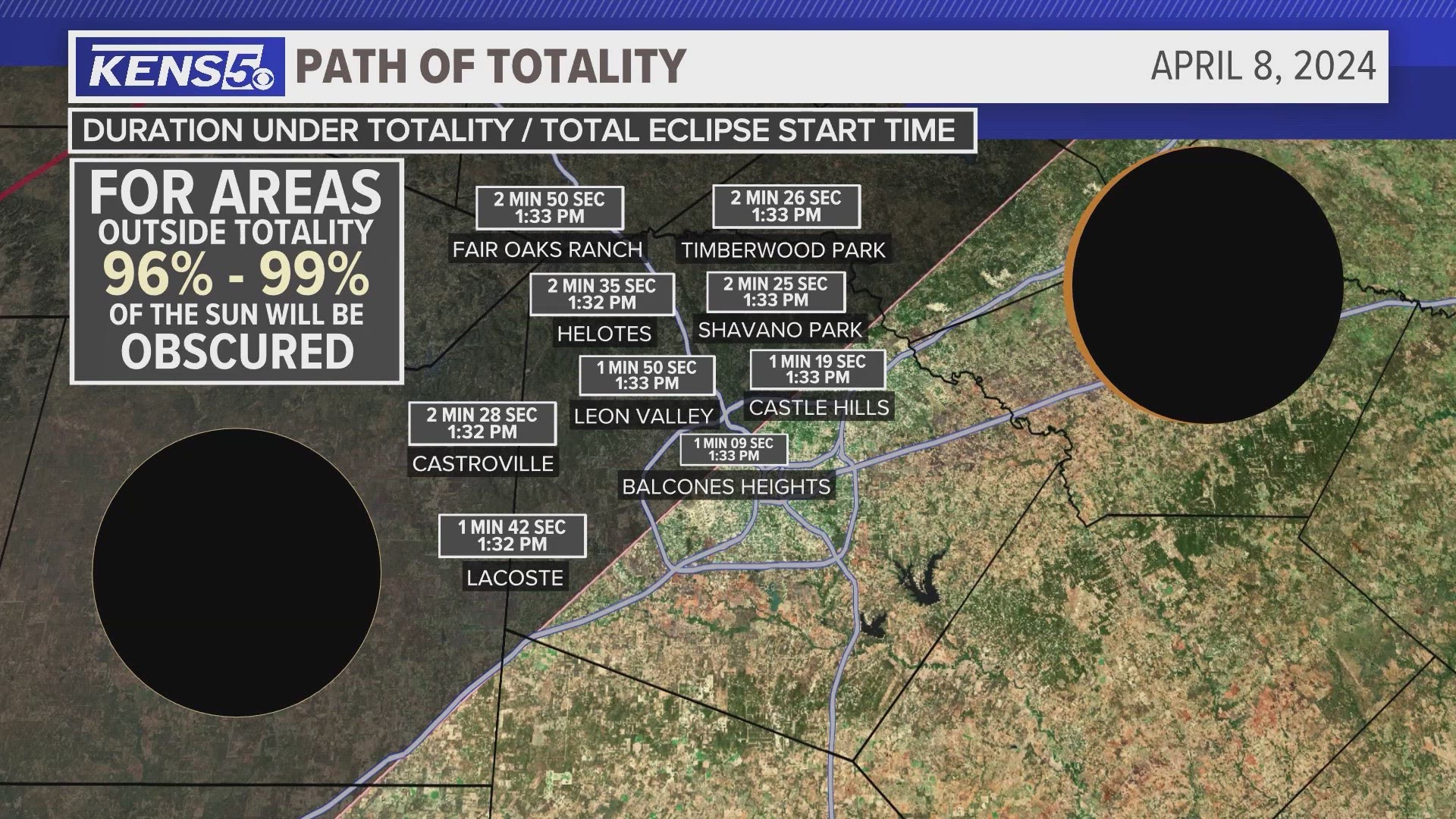SAN ANTONIO — Get ready, San Antonians, because the solar eclipse is almost here!
In a few short weeks, Bexar County residents will be able to step outside and experience day turning into a night-like state over the course of about one minute as part of the so-called "Great American Eclipse."
But not everyone in the area will see complete coverage of the sun if they remain where they are. In order to experience this once-in-a-lifetime event to the fullest, residents must live or travel to the northwest section of Bexar County.
There, the path of totality awaits.
If you are outside the path of totality, sunlight will still leak out from the moon's shadow, leaving 1% to 4% of the sun still shining. That means the full night-like effect expected to fall across Texas skies can't be viewed when outside the path. Since the sun is still radiating light, however, residents will not be able to remove their glasses if staying outside the path.
Where to travel to in Bexar County
The father northwest you travel on April 8, the longer the window of time residents will experience totality in Bexar County. That window starts at around 1:33 p.m.
Fair Oaks Ranch tops the list of Bexar County cities that will receive the longest window of totality, at 2 minutes and 50 seconds during maximum eclipse. Balcones Heights is slated for the shortest amount of time, at 1 minute and 9 seconds. While it may not feel like a whole a lot of time to see 100% totality, it is worth the travel.


Below are some Bexar County cities that lie within the path of totality and their length of time:
- Fair Oaks Ranch - 2 minutes, 50 seconds
- Helotes - 2 minutes, 35 seconds
- Timberwood Park - 2 minutes, 26 seconds
- Shavano Park - 2 minutes, 25 seconds
- Leon Valley - 1 minute, 50 seconds
- Castle Hills - 1 minute, 19 seconds
- Balcones Heights - 1 minute, 9 seconds
If you want even more time to experience totality, residents can travel closer to the path's center, where enthusiasts will have more than four minutes of totality.
These cities vary on time for maximum eclipse between 1:30 p.m. and 1:33 p.m. The cities with the longest viewing times are Kerrville and Fredericksburg, with 4 minutes and 24 seconds.


Cities located outside Bexar County with longer viewing times:
- Hondo - 3 minutes, 22 seconds
- Boerne - 3 minutes, 33 seconds
- Bandera - 4 minutes, 3 seconds
- Leakey - 4 minutes, 24 seconds
- Kerrville - 4 minutes, 24 seconds
- Fredericksburg - 4 minutes, 24 seconds
Timeline and description of totality:
The process for the moon to completely block out the sun takes time, accounting from when the sky begins to darken to when sunlight returns takes about one hour. However, the time for maximum eclipse is only about 1 to 2 minutes, depending on where you live.
If you're wondering what time to first step outside, the partial eclipse begins at 12:14 p.m., when the moon begins to cast a shadow over the sun in Bexar County. Over the following hour, more light will be blocked from hitting the surface.
Then, at 1:08 p.m., the sky will begin to darken with only a crescent shape appearance of the sun visible behind the moon. Finally, at 1:34 p.m., those in the path of totality can expect the darkest moment and the time for removing those solar glasses.
At this time, 100% of the sun will be blocked and most people will start to cheer!


During maximum eclipse you will want to experience the full atmospheric change, where sometimes the day will plunge to a night-like state very quickly (depending on weather). For example, if the sky is clear during totality, people can experience a 360-degree twilight darkness. If this occurs, try to find a place where you can see the horizon.
For those not in the line of totality, the sky will still get dark, but not night-like. Even with just 1% of the sun showing, you can't see the sun's corona; that's the real star of the show.
Those lucky enough on April 8 to experience totality will want to do their best to travel to the path and absorb the moment.

